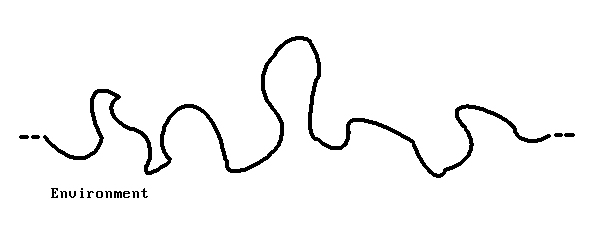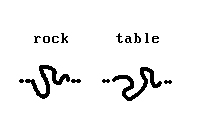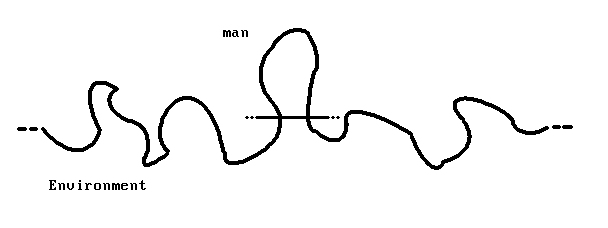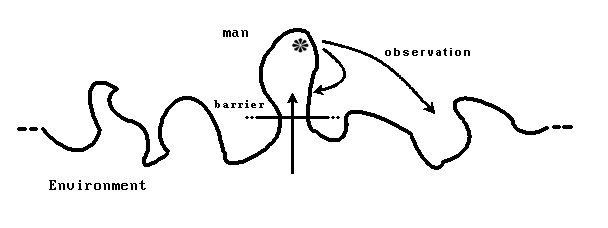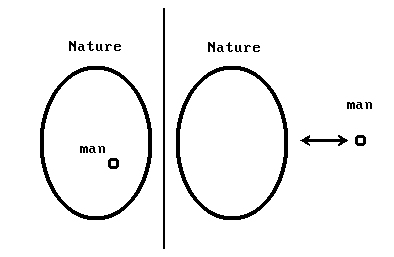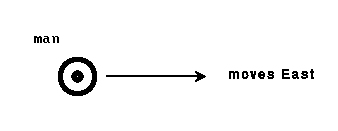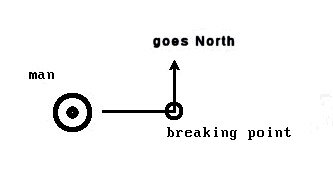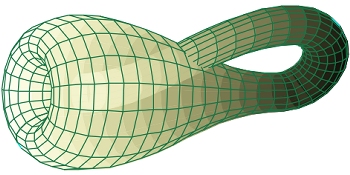The idea was to include this in the previous post, but then those quotes got too long and so I decided to postpone. Evangelion and the Kabbalah is a controversial theme because you have the impression that the anime added religious symbolism merely as window dressing and to appear mysterious. After all, when stuff blows up the resulting explosion is cross-shaped, and this isn’t explained at all.
When I started to look into Kabbalah it was solely because I was fascinated by the complex mythology and imagery. It was deep and so it was fascinating. This interest grew the more I went on because instead of a shallow mythology I was finding patterns that were extremely useful to understand a number of other things. It has nothing to do with “belief”, I still look at Kabbalah as a complete unbeliever. But it offers a number of ideas that work well in a number of different contexts. It’s like when you study psychology and use Greek mythological archetypes, or Shakespeare. Kabbalah incorporates powerful ideas that are deeply embedded in our culture, and describe well the human being.
That’s why Kabbalah “works” as an interpretative framework with Evangelion. To me it’s so obvious that it’s trivial. It’s not so much that you can recognize some Kabbalistic ideas within Evangelion, BUT that if you think at Evangelion in Kabbalistic terms then the story MAKES SENSE. So putting Kabbalah next to Evangelion doesn’t make it even more absurd and complicated, but actually clarifies a lot. That’s why it matters to me. It’s a key that works. And it’s not even so important that Anno deliberately put all this in the show with the exact purpose I mean, because what comes out is actually coherent with everything else.
In fact I don’t like at all reinterpreting some work outside its own context. I don’t like wild speculation and flourishing of fancy theories. But in the case of Evangelion the use of Kabbalah makes it simpler and coherent. Staying completely within the boundaries that Evangelion set for itself. So, in summary, Kabbalah has explanatory power for Evangelion, and that’s why it’s relevant for me (or why it’s relevant in other cases).
—
One of the ideas that go hand in hand is about “Adam”, and “Adam Kadmon” in the Kabbalistic parallel. The idea here is that “Adam” isn’t the first man, as a kind of first ancestor, in biblical terms, but the Kabbalistic Adam. Representing the idea of the “collective soul”. In Eva(ngelion)’s mythology the waters get a bit muddied (and probably rewritten during the show) because we don’t have just an Adam, but also Lilith. In this mythology human beings didn’t actually originate from Adam, but from Lilith, whereas Adam generated the “Angels”. But the common idea that’s relevant here is that Adam Kadmon represents the totality of life. Each human being is merely a small chunk of that collective soul. At the time of the Big Bang, following the scientific theory that Kabbalah also embraces, the initially undivided light (of God) got broken into pieces. In Kabbalistic terms Adam Kadmon represents the origin, before the “vessel” was broken in individual parts, as well as the final “complementation” (to use one Eva’s term), when all human beings are once again united as one whole.
This idea in Evangelion is directly represented in the image of Lilith, who’s called at first “Adam” (so you can assume that characters in the show also made the mistake, thinking themselves generated from Adam). A body nailed to a cross, whose lower half is missing and showing many human-looking limbs dangling off it, as if not completely formed. In any case, beside the manipulation in Eva’s mythology about Lilith/Adam mix up, there’s still the idea that all human beings are generated by that first “angel”.
Note: Kabbalah has a completely, utterly anthropocentric view. It explicitly says that a single human being is “worth” the totality of non-human life. Or, more accurately, his spiritual impact has power on all the lower three domains. That means: (the totality of) animate – vegetative – still. That for Kabbalah is a way to describe how immense is your power, since you affect directly everything else. This hierarchy simply follows an ideal of growing “desire”, which is the fundamental piece of all Kabbalah.
I’ll try to not derail and keep this focused on the structure of Eva, but it’s tricky because all these parts connect. What’s important to point out is that Eva is not a show with a religious theme. Religion is not its goal, and the authors declared this a number of times. And that’s why religion as a structure works so well. While in traditional Kabbalah “spirituality” is the goal, in Eva the goal is the personal message. It’s about the real world, like a message individually targeted at each spectator. The central theme is about living fully, connecting with others, overcome difficulties and introversion especially. Coming out of a shell, that also becomes the representation of a fictional egg where many people today live, refusing to participate in the “real world”. Hikkikomori. So there’s nothing abstract or metaphysical in Eva’s message. But they use some Kabbalistic framework to analyzes psychology and go deep in the human soul. The message needs to be both individual and universal.
The “Human Instrumentality Project” is an Eva’s term. It coincides with the “Third Impact”, which also means the end of the world. An apocalyptic event. But this also is the event that triggers the transformation of the main character into a “better” human being. It represents success, the breaking of the shell.
In Eva’s original project we read:
“Humanity has reached its evolutionary limit. Their salvation lies in invoking the Human Instrumentality Project.”
This curiously resembles to what I heard in Kabbalistic lessons. They also say we are, right now, at a pivotal time. Kabbalah has been kept hidden for all this time. It was “esoteric” knowledge, so only accessible to initiates. But now it’s different because they believe that humanity has reached the end point, and now Kabbalah needs to be extended to everyone regardless of race, sex, age, religion and so on. They measure this end point in terms of “desire”. And now that men have everything, the ultimate desire can arise everywhere: “spirituality”. In Kabbalah, as in Eva, the personal awakening coincides with a literal end of the world. But while in Eva the goal is tied to its own specific message, in Kabbalah it is obviously about spirituality and connection with god.
In both, the successful “complementation” of human beings, means a fusion, a return to Adam Kadmon. In Eva this is “metaphor made literal”. Eva uses terms like “Absolute Terror Field” and “LCL”, the first is a fancy term to define the ideal barrier that keeps us as individual beings, instead of being fused into Adam Kadmon. The force, or field, keeping us physically separate, with individual minds, fears, desires, memories, feelings. The LCL is instead the “primordial soup”, a generic liquid from where all life is generated. When the A.T Field finally collapses, with human beings literally “popping out”, everything is fused as LCL. All minds are joined. This is the premise of the “Third Impact”, and of the “complementation” of human beings. In Eva, all this is happening literally. You see it onscreen, people exploding and made into liquid soup. But this also follows precisely Kabbalah’s structure, taking those ideas and showing them literally instead of as metaphors. Also in Kabbalah human beings are kept individual by a force, but instead of being fancily named A.T. Field, the force in Kabbalah is simply called “egoism”. Egoism is both a positive and negative idea. Positive because it represents the “will to receive”. The will to fulfill personal desires. And so the will to be alive. Can you see anything wrong with this? But it’s also negative, and in fact Kabbalah is about cleaning and removing egoism. In Kabbalah there’s no way to escape the “will to receive”, because that’s the program embedded into us. That’s what you’re meant to be. But it also holds the principles to return to god, by connecting with other people. Even in Kabbalah the goal is “complementation”. The return to the undivided LCL, or Adam Kadmon.
“Success” in Kabbalah is fairly obvious. The idea is that in spirituality forces that are similar are also the same. Without distinction. Which means that through spirituality men can become “like god”, and so god. This means that the total removal of egoism, including the removal of the “self”, are the goals. In Eva, considering that Eva’s goal isn’t neither religion nor spirituality, “success” is far more ambiguous because successful complementation affirms the “self”. It’s about breaking the shell, affirm oneself as worthy of life, a positive force to move on.
This is also the split between the end of the TV series and the end in the movies. As I already said in the other post, I interpret these as alternative endings, where one includes Anno’s own personal reactions, to the reactions of the public at the TV ending. The message of the TV series, the “successful” complementation and the affirmation of Shinji who got out of his shell, was not received by the public. In the movies, then, Shinji is shown as a lot more passive, as if the character reprises the reactions of the public to the TV show ending. It’s a story of failure. A sort of tragedy where the character is simply crushed under the difficulties. He’s not good enough to solve all his problems and become a successful and praiseworthy human being. Maybe this is the most realistic portrait, because it’s not anymore a “fictional” story where the protagonist has plot armor and is ultimately always successful.
At the end of the movies, the “Third Impact” is triggered as in the TV series (but showing the literal side, instead of the metaphysical one of the TV ending). All human beings are fused in LCL. But during this process the “complementation” fails. Shinji refuses it, affirms his own identity in all the problems and shortcomings he has. He’s not suddenly and automatically a better human being who conquered all his fears, instead he has to face his “real” self. All his fears and limits. His selfishness, his egoism. His “will to receive”. And also his desire to be alive. All this is ambiguous and, because so, authentic. It mimics the complexity of life. Shinji who has done his best, and yet it wasn’t simply enough to overcome all his problems. It’s a non-judgmental view, and because so it is powerful. Shinji is cruelly shown as a shameful character, who failed and only showed his misery and his limits. Almost looks pathetic. The last scene shows another character with Shinji who expresses disgust. But it’s not a definite condemnation. It’s not judgmental because Shinji affirmed himself, his desire to be alive despite all his flaws and his lack of strength. It demands compassion. “Complementation” fails because Shinji has the power to negate it. While in the TV ending the shell is broken and Shinji becomes a new character who conquered his own issues (and this is shown as the goal of a successful complementation, as if all reality was just designed in order to get Shinji through this process), in the movie ending instead Shinji ends up REJECTING complementation, and he restores things as they were before complementation was triggered. Individual human beings are restored.
This obviously creates a controversy of interpretations, between those who think these opposite endings (one successful, the other a failure), and those who think that the end of the movies simply expands and connects back to what was shown in the TV ending: Shinji in both cases affirms his own life. With the slight difference that the movie ending is much less “happy” and unambiguous.
In both cases the Kabbalistic interpretation only enhances these possibilities. The fact that Shinji sabotages Instrumentality, and ends up breaking complementation, is coherent with the Kabbalistic complementation. You can’t trigger it artificially (as it is in Eva, since it’s forced against Shinji’s will). In Kabbalah the “next level” on the evolution, the complementation, only happens if one is ready for it. In Eva, especially the movies, Shinji is simply not ready. The movie shows a Shinji who fails breaking the shell, and ultimately rejects complementation. He’s not ready to strip himself of his “egoism”, so a proper return to Adam Kadmon is not possible, and as a consequence the division in individual beings is once again inevitable. Whether you find a positive or negative value in Shinji’s affirmation of the “self”, this is coherent with the Kabbalistic interpretation. Because in Kabbalah complementation REQUIRES the negation of the self. It requires conquering egoism fully, and only when one is ready for that step. Otherwise what happens is what happens: that we exist as individual beings. That we are selfish and concerned with immediate desires, completely driven by the selfish “will to receive”. We’re stuck in the physical world and all it comprises.
In the Kabbalistic’s vision the physical world is an illusion. It’s exactly like “The Matrix”. A simulation. The exact instant you “let go” of worldy needs, individual desires and embraces spirituality, the physical world collapses as the illusion it is. Instrumentality would be complete and successful. But Shinji isn’t ready, and so is pushed back in the physical world, back with his own problems to overcome.
There’s also an interesting aspect connected with all this. The very visceral idea when you watch the show, and made explicit with the TV ending, that everything that happens has Shinji as a pivot. Shinji-centric. It’s as if all the fictional layer is built FOR Shinji and around him. Built to push him forward through his Hero’s Journey. Without independent existence.
There’s a giant robot classic trope that is fully and willingly embraced by Eva: the hostile Angels that Shinji fights are DESIGNED TO SUCK. Every one has a blatant weakness that will be used to destroy it, and none of the following angels tries to improve or fix previous problems in order to actually try to win. Now, all this also has a post-modernist air. We know that the show has a WRITER, and that enemies in a giant robot show ARE designed to be defeated. That’s the point. But in Eva this isn’t just the truth OUTSIDE the show, it’s the truth INSIDE it. Gendo, Shinji’s father and deus-ex-machina, has always an unfailing faith in the giant robots. He’s always shown as completely emotionless even in the most dire situations. While this “fits” the character for other reasons, the point is that he simply knows how things will go. He’s not blinded by faith, but illuminated by clarity. He knows that what happens follows a pattern of predestination. He is essentially (partially) aware of how the show is written. He has read the plot. The same sense of inevitability as the show rushes to its end, is very similar to the sense of inevitability in the last episode of LOST. And if you were to compare them you’d notice some similar patterns.
Gendo knows that everything, as in a Kabbalistic construction or as in the actual truth, is a very elaborate fictional world that is built solely around Shinji. Nothing truly exists without Shinji. And Shinji can’t fail, because he’s the God in the Machine (Donnie Darko-style), following the unfailing plan of god/writer/Anno. This world would end, literally, without Shinji. It’s his story, his Hero’s Journey. Built for him exclusively. All other characters are puppets (but do not mistake, no more puppets than other people are for “you”), the angels are puppets. It’s all a story, for him. And it’s all, really, a story for us, the audience. Or better, not a generic “audience”, but you, the single spectator. The “self” experiencing this story, or the self who’s merged in reality, alone. The message is personal and aimed straight at you.
There are other small aspects that coincide between Kabbalah and Evangelion. For example in Eva’s mythology the “Dead Sea Scrolls” are simply a manual with the instructions to reach “Instrumentality”. They read in it about the origin of human beings and angels, the “hidden”, esoteric story of humanity. But this is essentially the same for Kabbalah. In our real world the “Dead Sea Scrolls” represent more or less the “Torah”, meaning the ensemble of Kabbalistic texts. And it’s interesting that, for example in the video I’ll link below, Kabbalah is literally defined as nothing more than an “instruction manual”. In Kabbalah as in Eva, these Dead Sea Scrolls are used as instructions to lead humanity to Instrumentality, or Third Impact, or Complementation of Human Beings. Or spirituality in Kabbalah, return to LCL/Adam Kadmon, or the actual end of the physical world, literal in Eva, spiritual in Kabbalah. The trick is simply that in Eva all the Kabbalistic framework is employed as a “metaphor made literal”, then mixed and dressed with “genre” aspects like giant robots and alien monsters, whose goal is introspection. Examining human condition through one character, and through that character specifically the social group of anime fans.
On a forum I concluded:
—
That solution works on all possible levels of interpretation.
The ending of the TV series represented the ideal of the story Anno wanted to tell. It represents Anno’s wish and desire: that Instrumentality could work and Shinji would fix his issues, as the anime fans fixed their own by embracing the message in the show. But then the sequel movies became for Anno a way to THINK on the series itself and its message. They become meta-commentary: whether or not the message actually was understood and worked.
On BOTH levels, it didn’t. The message failed if you think about the public’s reaction (to the show’s ending). And then Anno realized that Shinji too wasn’t ready for Instrumentality. He wasn’t through his personal issues, as shown in EoE before Instrumentality. His character didn’t grow, it actually regressed. Hence the acknowledgement that the TV series’ “happy end” on one side wasn’t possible because rejected by the public, and then made by Anno into the truth of the story. Shinji not being ready for Instrumentality, as wasn’t the public.
This because the whole core of Eva is: Anno = Shinji = public (or nerds/otakus who can identify with Shinji, see Tsurumaki who literally says “it’s useless for non-anime fans to watch it”)
Or, if you want: God, Jesus Christ, and the Holy Spirit(LCL)
All themes converge on these three. Where’s the god? Nowhere. The god is merely the introspective lens of analysis. On Nerv’s logo (Nerv is the agency that built the giant robots and that wants to trigger Instrumentality) is written: “God’s In His Heaven, All’s Right With The World”. Which is obviously not a reference to some external god, but to the idea of a final peace, or acceptance. It coincides with the theme of Instrumentality. Evangelion is not (and the staff affirmed as much) a religious idea. The show is not about god. Kabbalah is just a pattern or a mean. In true Kabbalah the goal is spirituality. In Evangelion, it’s self discovery or whatever you want to call it.
As for Kabbalah, there’s a video I usually link because it’s presents the framework in a direct and seductive way: http://www.perceivingreality.com/
—
I’m watching episode 25 again and enjoying the meta-fictional level. Here’s the mindfuck (if the end of TV wasn’t enough of it already):
On one side there’s a very manifest subversion on a Kabbalistic idea. Kabbalah says that at the maximum of evolution (as we are today) human beings reach the maximum of their desires. And yet they feel a “lack” that pushes them toward “spirituality”, which is the sublimation of desire and the consequent breach of the physical world as we know it. They call this feel as “the point in the heart”, which is the mechanic used by Nature to push us toward it, or otherwise we wouldn’t progress further and stop evolving. In Kabbalah evolution is guided by desire.
In Evangelion there’s the exact same concept. The setting explicitly mentions that it portrays humans at their evolutionary peak. The Longinus lance in the TV series is retrieved from the South Pole and thrust by Rei into Lilith in order to temporarily BLOCK the final evolution. When Gendo decides to speed up again the process, Rei pulls the Lance away, and we see Lilith starting to regenerate. When Kaworu meets Lilith, we see her having a swollen belly, all probably hinting that a “birth” was near. In this case this birth is the symbol of the next step on the evolutionary ladder (like in Kabbalah).
Now in episode 25, all this is made quite explicit. Instead of calling it “point in the heart”, Eva directly refers to “the void in the heart”. But its purpose is equivalent. These are exact quotes from the show:
“There is always a void, a part that has been lost in our hearts.
That is what gives rise to the hunger in our hearts
That’s why you’re going to bundle all human souls together,”
And:
“That was the beginning of the instrumentality of people”
Even in Evangelion there’s this “lack” that, as in Kabbalah, is meant to push human beings toward “instrumentality”. Both in Eva and Kabbalah, the lack in the heart is the Natural instinct that drives human beings toward the next evolutionary level.
The second level of this mindfuck is instead related to Anno and the final part of episode 25. What the characters tell Shinji is that the world he sees is EXACTLY the world he “willed”. That everything goes accordingly to his own desires and that this is just one of many possible futures (which also connects to the Rebuild as being “sequels”).
Quoting again:
“There are a lot of realities. This is one of them.
This is the result you wished for.
Yes, annihilation, a world where no one is saved.
This is reality.
It’s your own world where you coexist with time, space, and other people.
It’s a world where you yourself decide how to perceive and accept it.
Right now, this is your world, where everything is given to you.
You’re saying even this darkness and this world of half measures are all things I wished for?
That’s right.
This is one of the many ends that could occur.”
Now consider the relationship I underlined in the past. God, his son, and Holy Spirit. Anno, Shinji, the audience. Anno is the “god”, because he writes the reality of his fiction. He writes the show, the characters, the setting. So, being “outside” of his creation, he has god-like powers. In Christianity the dogma of the Holy Trinity says that each is essentially the same. God imposed on itself human limits and became Jesus in the physical reality. You can read that the “heavenly Son reflected his Father’s qualities and personality”. Anno writes Shinji as if he writes himself within the boundaries of the story. Shinji is Anno in the story, effectively his incarnation, with the limited powers as every other fictional characters. It’s like if there’s an opaque dome that covers the fictional layer, and so Shinji doesn’t know that “outside” there’s an Anno who’s writing it in his liking. He is like Anno, but he’s subject to the rules of the story. Can’t escape them or transcend his condition, and has to suffer like every other human being (like Jesus). And then there’s the audience. The audience is the singular “you” who watches the show and that can identify with Shinji, as well it represents the multitude of all spectators. The same as the Holy Spirit represents the “you”, as well as the rest of humanity sharing it. Shinji is the mediator between god and audience. The same as Jesus brought on earth the message of God. The message of god is Anno’s vision, and we become one with it because we identify with Shinji, and so “complement” with him (and so with god too).
Now reread that last quote while having this context in mind. The “reality” Shinji lives in, IS effectively decided by him, because it’s the Shinji-Anno who’s writing it. He’s effectively, literally the god of his world. He just doesn’t know because there’s the opaque dome that doesn’t let him transcend his dimension. Yet Shinji is one with Anno, he “reflects his Father’s qualities and personality”. He’s his own creation, on which Anno has total control. And so perpetuating the fact that this world follows EXACTLY the will of his heart. Just that hidden part of his heart that is concealed from him, because it belongs to Anno himself.

